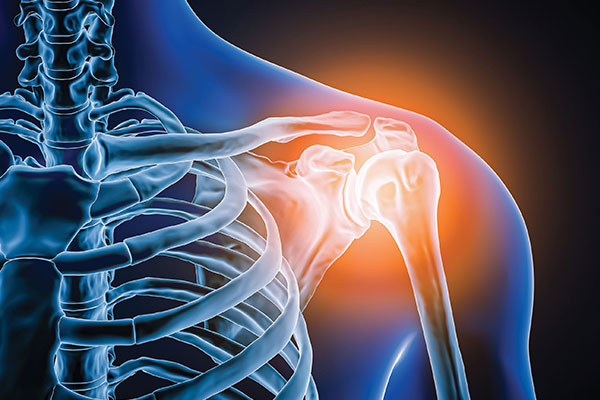
Borrowing a page from their colleagues who specialize in robotic knee and hip replacement surgery, orthopedic specialists who treat shoulders have fine-tuned their operating-room techniques and are sending patients home sooner for faster recoveries. The solution?
The use of CT-guided imagery to replace a patient’s injured or deteriorated shoulder enables orthopedic surgeons to place artificial joints, wires and screws in real time to match the patient’s anatomy as closely as possible, says Dr. Brian Hill, a board-certified shoulder and elbow surgeon at Palm Beach Orthopaedic Institute who performs surgery at Jupiter Medical Center. “As with knee and hip surgery, more shoulder replacement patients can go home the same day,” he explains.
The improvements have emerged in the last five years, thanks to innovative technologies, more precise computer-guided surgical equipment and technologies, emerging artificial joint materials, and techniques borrowed from other types of joint surgery, he explains.
During Dr. Hill’s residency and fellowship training in the shoulder and elbow specialty from 2014-2020, he recalls relying on X-rays and CT scans to plan surgeries — earlier technology that did not help surgeons know exactly where to place an artificial joint in the operating room.
Now, however, he can rely on visual imaging technology – almost like Google glasses – during surgery to see the entire procedure in “mixed reality” in real time.
“Not only can we plan surgeries beforehand and identify exactly what implants are needed to get the best range of motion with the least amount of impingement, the CT imaging technology in the operating room also allows us to see directly where we’re placing the implants into the new joint, matching the plan we identified before surgery,” he says.
Dr. Hill describes these and other innovations that are improving specific types of shoulder replacement surgery. They include:
- Improved robotic surgery programs and equipment
- More precise and informative imaging equipment that provides real-time information and feedback in the operating suite
- Development of new materials for replacement joints, including graphite-like materials that resemble human bone “more closely than anything we’ve had before”
“Shoulders are sort of leading that charge to see what’s the next new thing in orthopedic surgery,” Dr. Hill says. “All of the different shoulder replacement manufacturers are trying to get ahead of the game.”
Benefits for surgeons include improved outcomes and leaner, more efficient procedures in outpatient settings. For patients, the innovations often mean quicker release from the hospital – including many who return home the same day with a new shoulder in a protective sling – and new artificial joints that feel more like the real thing.
AUTHOR: Brian W. Hill, M.D. is a board-certified shoulder surgeon at Palm Beach Orthopedic Institute. He is an expert in advanced reconstructive and arthroscopic techniques, and serves as an assistant team physician for the Washington Nationals and their affiliates. Dr. Hill treats shoulder injuries and arthritis with a focus on patient-centered care and clear communication.






